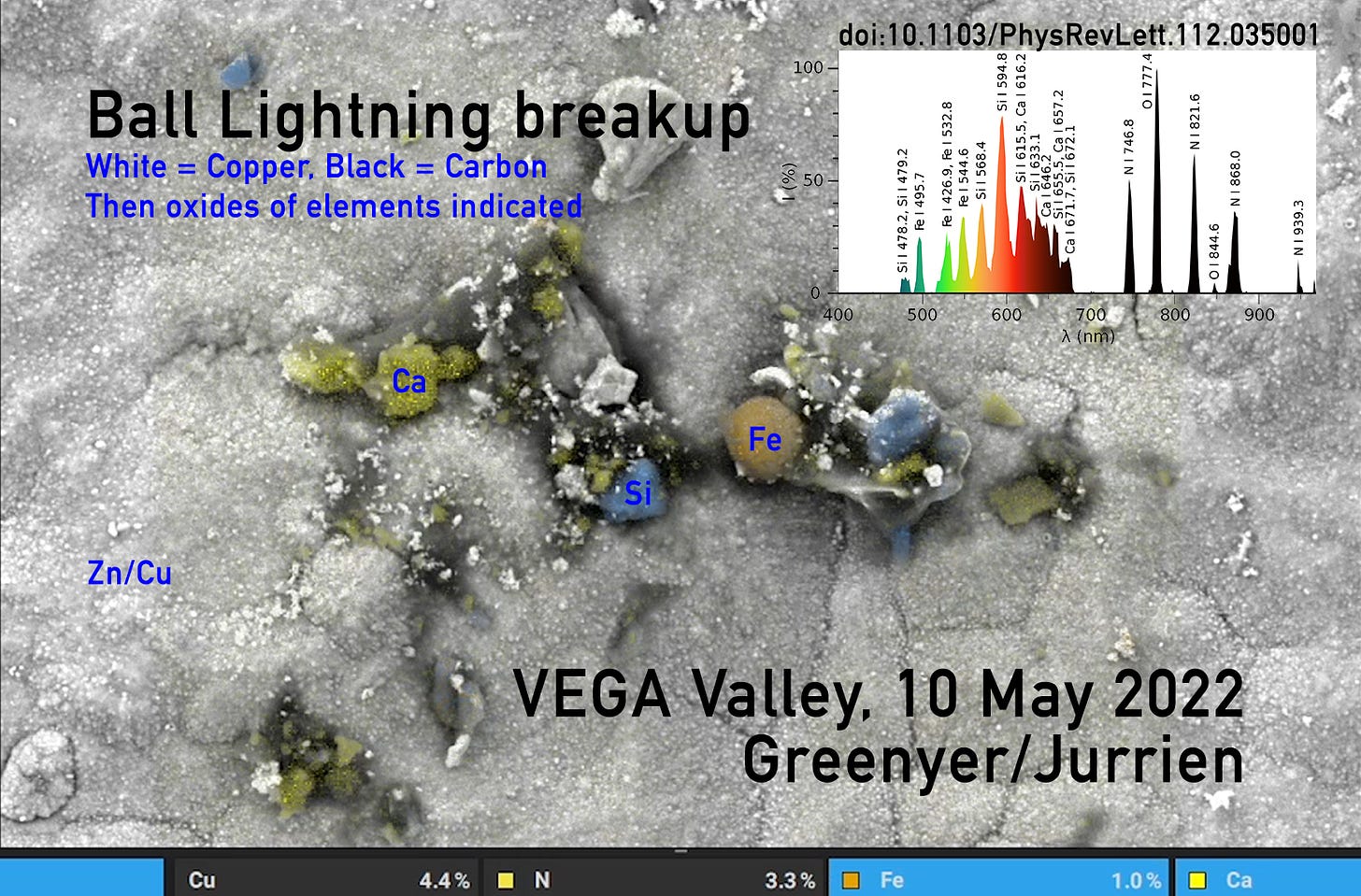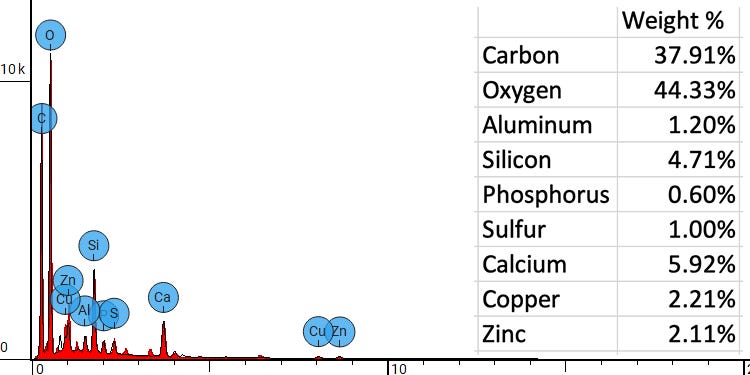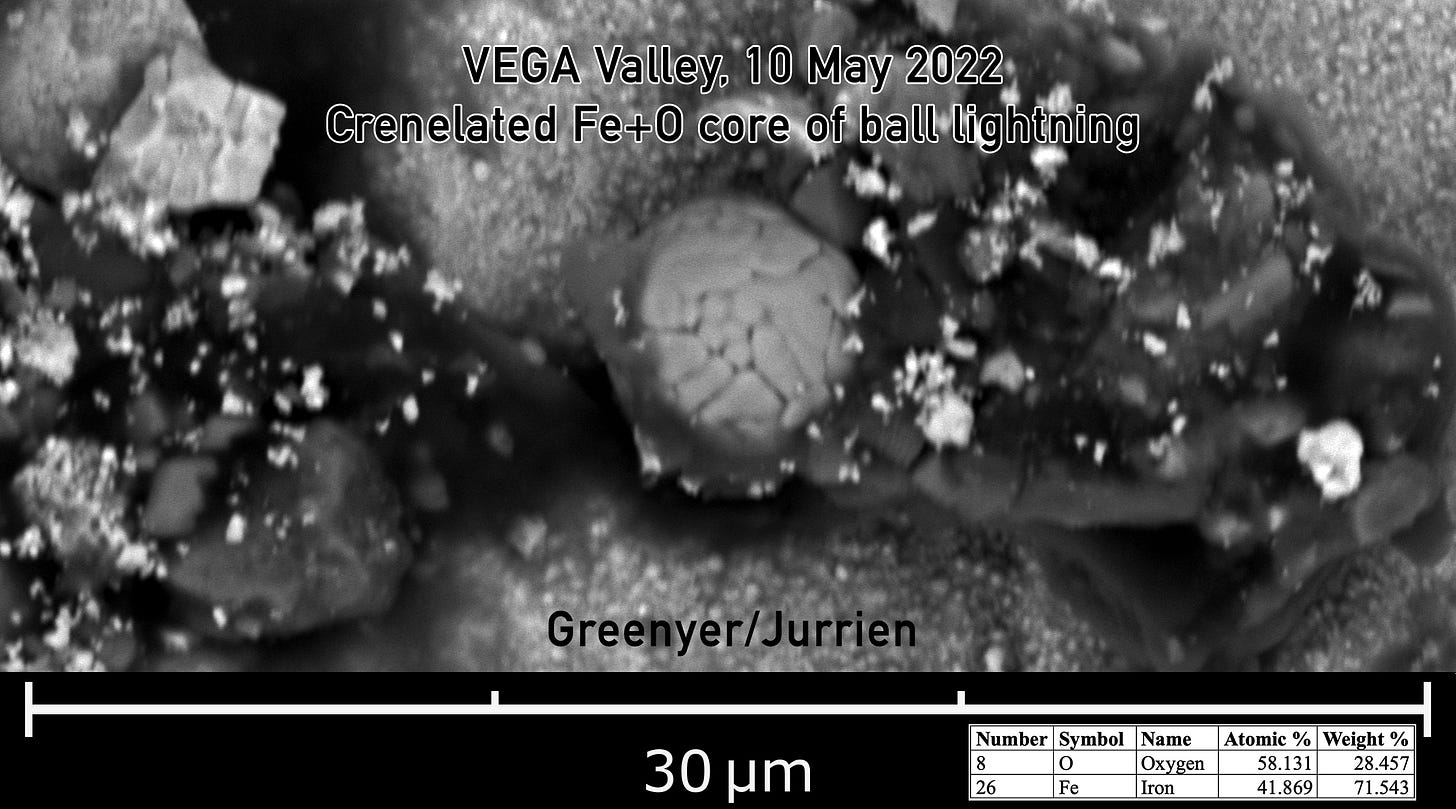VEGA - Ball Lightning break up
Match of detected bulk elements to only natural ball lightning recorded spectrum
In this video of a realtime recording of analysis of the VEGA Valley eastern plateau, we clearly see what is likely to be the break up of a small ball lightning on a substrate of predominantly Zinc and Copper Oxide, which are oxides of the starting material - Brass.
All of the data sets align, suggesting we really are producing ball lightning (BL)
Hessdalen crenelated Fe-rich sphere from soil impacted by ball lightning (p.13)
http://www.hessdalen.org/reports/EMBLA_2002_2.pdfMagnetic spheres have been found associated with ‘genuine’ crop circles, some of which have also been observed to have been produced by ball lightning, though one of the most famous videos has been reasonably challenged.
More credibly, magnetite spheres were found in samples taken from the Tunguska event, attributed potentially to an airburst explosion of a meteorite, something that would have the energy to synthesise exotic vacuum objects.
The bulk elements found in the VEGA BL breakup debris (not in brass) field match and only match the elements observed in the only spectrum recorded of natural ball lightning. - https://sci-hub.se/10.1103/PhysRevLett.112.035001
The other elements found in spot sampling, such as Al, Si, P, S (that we also found in 10-Yen VS Ohmasa Gas and is common in testimony regarding BL events.) are the most common standard George Ohsawa reaction products, See chart here- https://steemit.com/steemstem/@mfmp/what-really-is-new-fire-fuel
Note the previously identified crenelated iron/oxygen core (and here in ULTR) and the distances of ejecta of various elements.







Can I ask what this structure might be? (right click the picture and open in new tab to see full size) https://imgur.com/a/JlJ3EQR
Have you read this work of Ken and Jim Corum